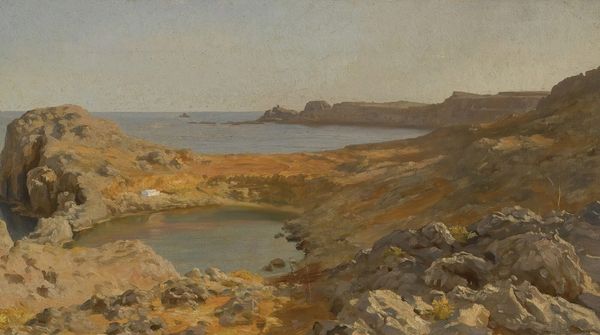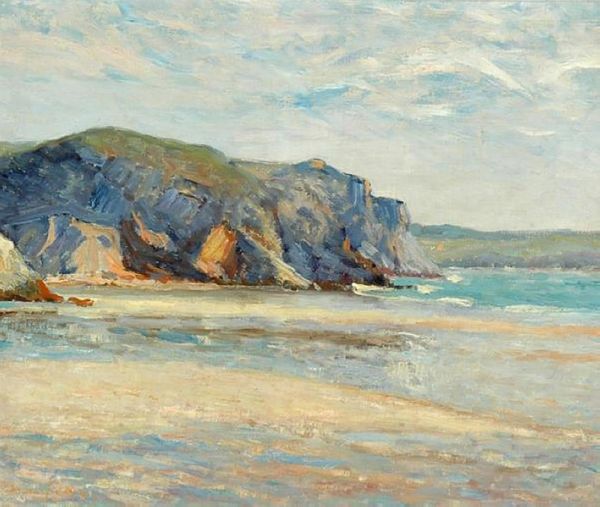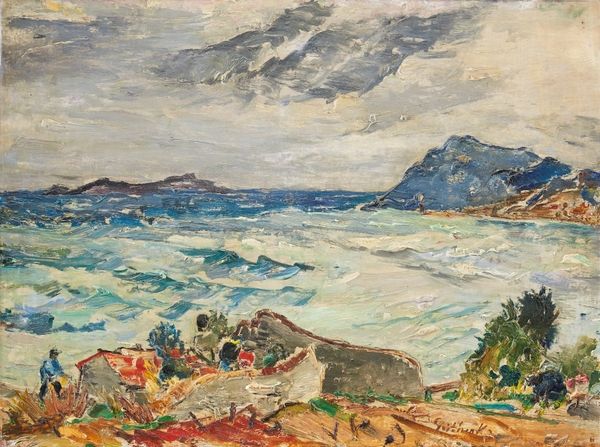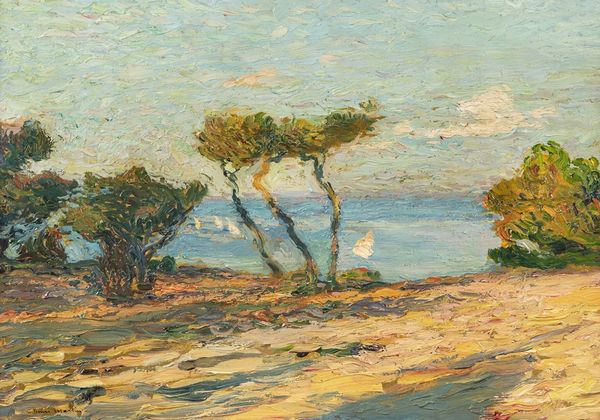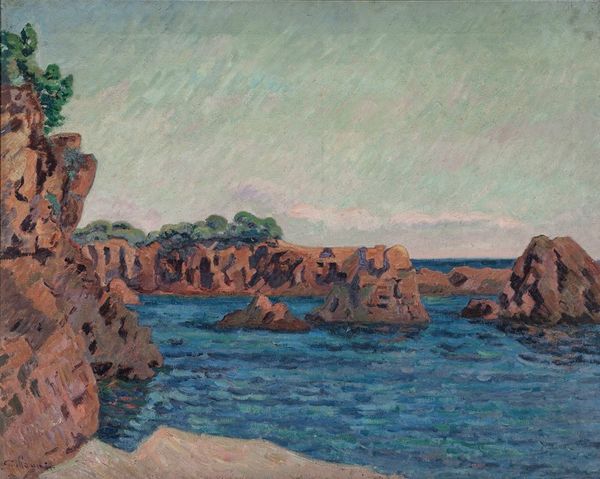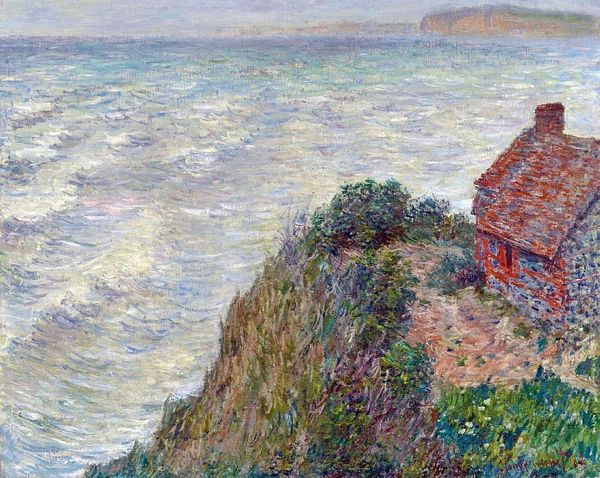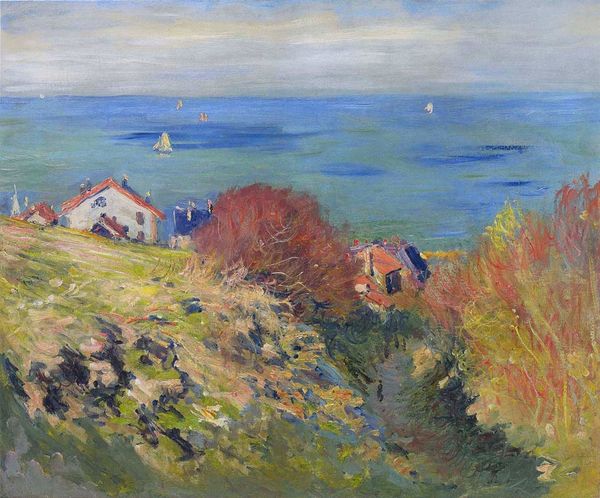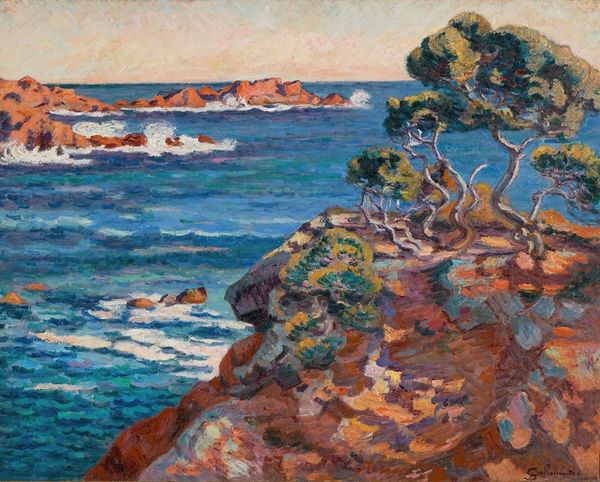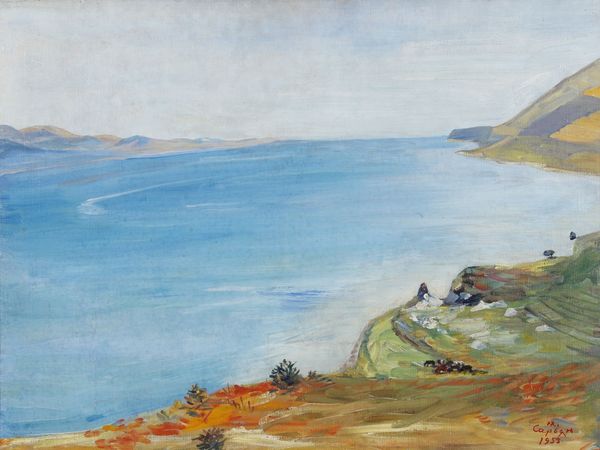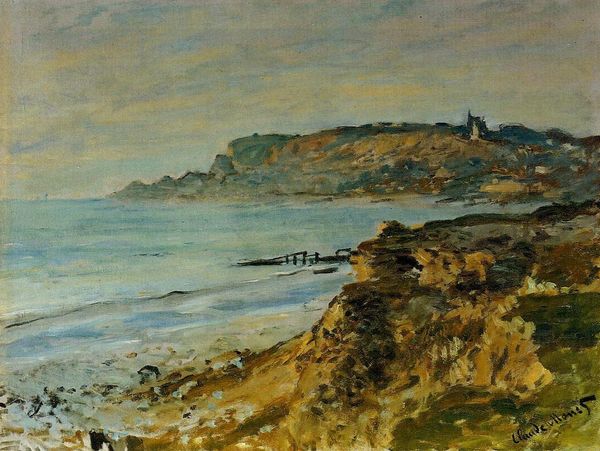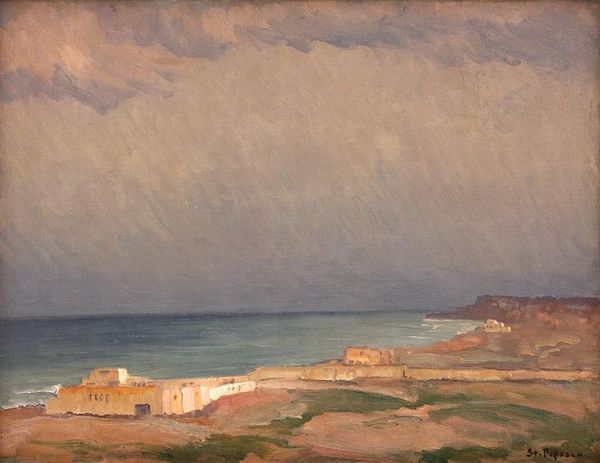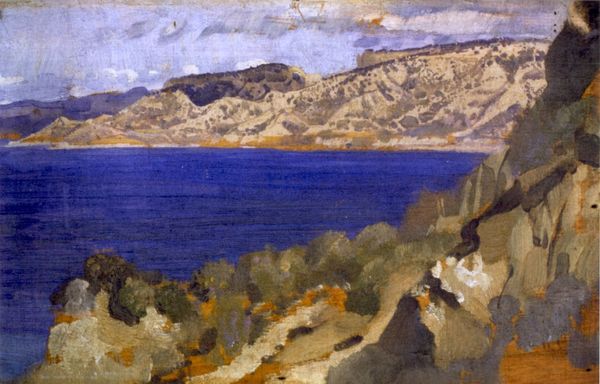
Copyright: Samuel Mutzner,Fair Use
Curator: Right now we're looking at "Landscape from Corsica (Ajaccio)" by Samuel Mutzner, an oil painting from 1929. It is clearly a plein-air work. Editor: The immediate vibe? Sun-baked serenity with just a touch of melancholy. It reminds me of a faded postcard found tucked away in a dusty attic. Curator: The placement of this work is particularly relevant, Samuel Mutzner traveled extensively across Europe. Corsica, a Mediterranean island with a complex history of shifting rulers and cultural influences, acted as a significant site for Mutzner. This informs how we understand both his artistic process and the final rendering of this seascape. Editor: Absolutely. There’s a real sense of… yearning here, I think. The solitary building on the hillside. Is it abandoned? Or a quiet refuge? It creates a visual question. The hazy pastel colors make the scene feel timeless. The thick paint handling speaks of movement, an energy vibrating from nature's source. Curator: Indeed. That singular structure hints at larger social and political dynamics playing out in rural landscapes of the early 20th century. The interwar period was, of course, riddled with great sociopolitical change, and how individual experiences translate through an artistic lens becomes highly important. It’s impossible not to note, too, the gendered component, right? Editor: In what way? Curator: Travel during this period was highly gendered for women. Their art or social contributions tend to become minimised, right? As being of little impact? Whereas this landscape almost screams 'adventure'! I just mean it invites us to question how male gaze still frames our understanding of landscapes. Editor: Hmmm. True. I’m just imagining being there, the warm sun on my face, the smell of salt air. It makes you wonder if this piece captures not just a place, but also the emotional experience of a very specific traveler. A wanderer like Mutzner. Curator: Perhaps our task, as viewers and interpreters, then, is to think more broadly about these undercurrents and allow them to challenge the ways that landscapes have historically been understood through biased Western traditions. Editor: I love that, thinking about these landscapes as palimpsests—revealing layer upon layer of untold stories if you look hard enough.
Comments
No comments
Be the first to comment and join the conversation on the ultimate creative platform.
